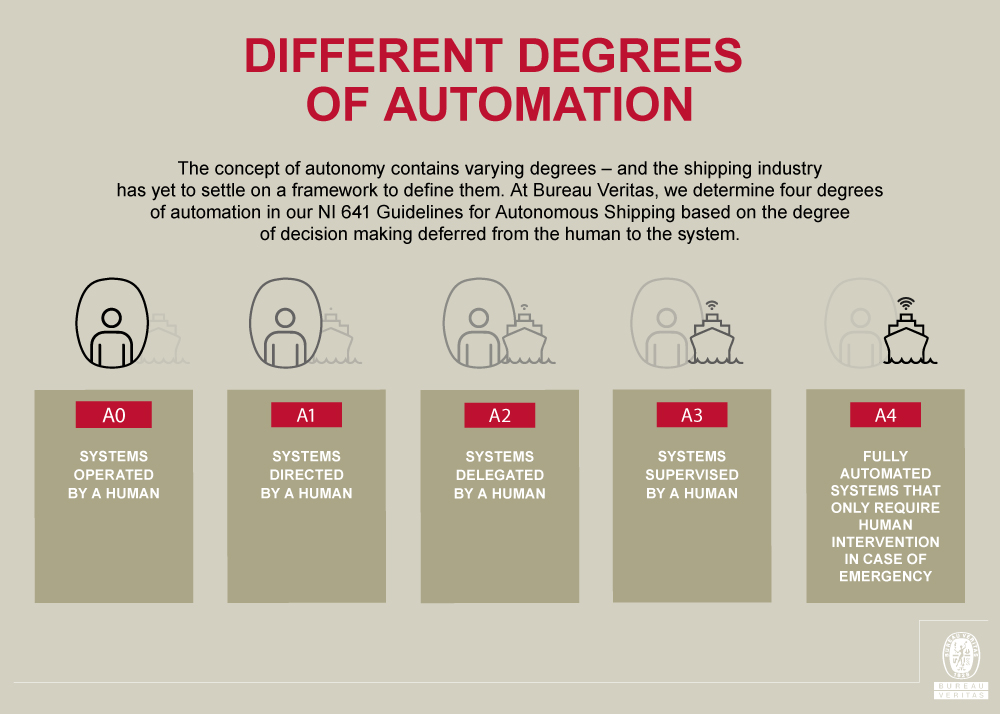Bureau Veritas published a whitepaper, in which describes different degrees of automation through two key factors: the degree of automation and the degree of control.
In particular, the degree of automation represents the degree of decision making (authority) deferred by the human to the system. It is a way to make a distinction between the human and the system’s roles as the system performs various functions.
What is an autonomous ship?
According to BV, “autonomous ship” is a broad term. In fact, ships may have one or several autonomous onboard functions: some may be operated remotely from shore, and some fully autonomously. A fully autonomous ship would be able to carry out its routine operations using automated systems, without human intervention. There are few such vessels today, and for most autonomy remains a matter of degrees.
Autonomous shipping is still in its infancy, but as the maritime world becomes increasingly digitalized and connected, ship owners should understand its potential benefits.
What are the benefits of autonomous ships?
The key benefit of an autonomous ship is in its increased safety, which stems simply from reducing the human error factor. With high degrees of automation and enhanced support for decision making, smaller crews operate smarter ships, which also tend to be safer ships. There are areas in which technology can prove more accurate than human senses, for example using object detection based on sensor fusion, rather than the traditional look-out.
In the coming years, however, ships will continue to have crews on board, with automated systems increasingly lending support in their operation of the vessel.
Autonomy is a complicated concept, and autonomous ships still sound like sci-fi to many. We cannot ignore, however, that the shipping industry is becoming increasingly digital and connected, and autonomous ships will be part of that transition.
..Jerome Faivre, Head of Digital & Autonomous Ships Rules Bureau Veritas M&O.
What is the difference between autonomy and automation?
BV highlights that the concept of autonomy contains varying degrees of autonomy – and the shipping industry has yet to settle on a framework to define them. At Bureau Veritas, we determine autonomy based on two factors: the degree of automation and the degree of control.
The degree of automation represents the degree of decision making (authority) deferred by the human to the system. It is a way to make a distinction between the human and the system’s roles as the system performs various functions. The impact of a system error will be predominant for a high degree of automation, whereas the impact of a human error will prevail for a low degree, reaching 81.1%.
BV identifies four degrees of automation in its NI 641 Guidelines for Autonomous Shipping:

What kind of autonomous ships already exist?
As explained, so far, autonomous shipping has mainly been of interest to naval vessels. There are also unmanned surface vessels (USVs) that make use of this technology, such as small hydrographic survey ships. Right now, rather than fully autonomous ships, we are seeing increasing numbers of smarter ships with automated systems enabled for intermittent remote control from shore.






























































